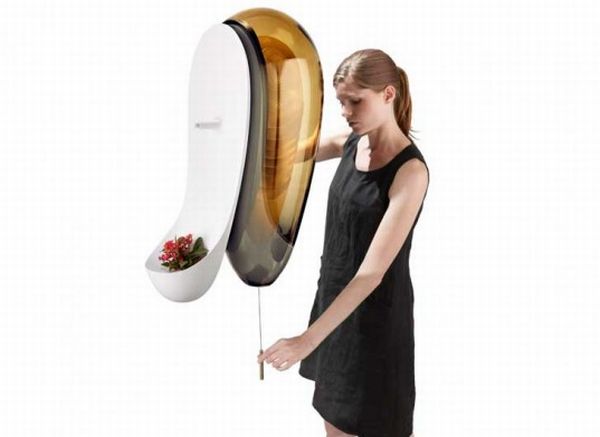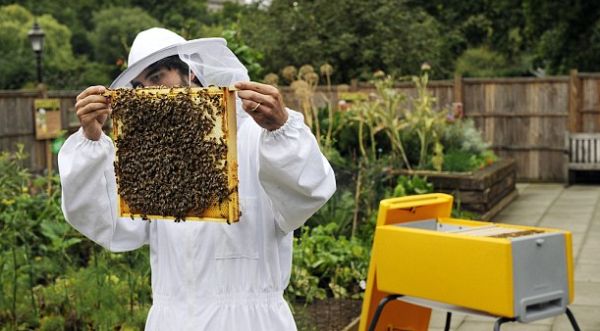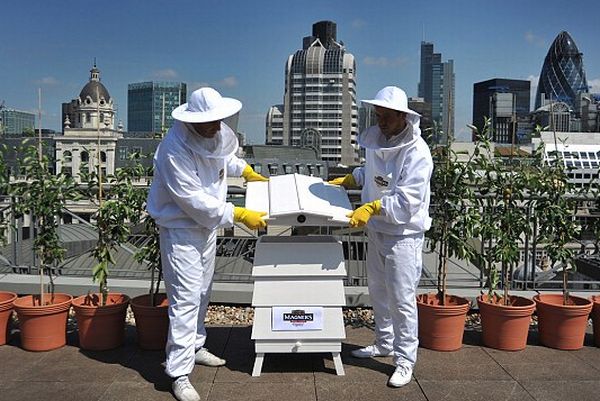
The concept
Harvesting honey has been practiced for centuries. Ever since humans realized the value of honey, visits were made to bee colonies to harvest this medicinal substance. Proof of this is etched in rock carvings dating back to 13,000 BCE! However, the population of honey bees has been on a gradual decline though no one really knows why. It could be due to modern use of pesticides or spread of diseases. Either way, these little honey-producing creatures are dying out and efforts are now being made to ensure their survival. One method is beekeeping where bees are maintained in places called apiaries. Honey and other products produced by bees and their hives like pollen, beeswax and royal jelly are then collected.
What is interesting is that colonies of honey bees seem to be doing better than in the countryside. While the reason for this is not yet known, urban beekeepers are doing what little they can to stem the population decline. Dutch electronics giant, Philips, has designed an Urban Beehive that people can keep in their homes to collect honey. It is part of the company’s Microbial Home design. The device contains honeycomb frames covered by tinted glass. To collect the honey, smoke is released into the hive after which the cover is opened and a small cord is pulled so the honey drips.
There are concerns, however, about the practicality of such a device. The fact that the Urban Beehive is used inside homes and bees are smoked out of it leads some to believe that this could be dangerous to the people around.
The inspiration
The recent decline of honeybees prompted Philips to attempt to come up with a solution. Like most insects, bees are vital for successful pollination, not only of flowers but of crops. In fact, out of 100 types of crops, around 74 varieties are said to be pollinated by these little helpers. The Urban Beehive is part of Philips’s concept of creating an ecosystem that advocates finding solutions to the problems of energy, human waste, food preservation and lighting.
With the Urban Beehive, the bees enter via a tunnel situated above a flowerpot filled with pollen. On entry, they can lay their larvae in the honeycomb and store pollen and honey. There is an opening to smoke out the hive which, incidentally, is done to calm the bees down as well as to be able to collect honey safely. However, while the concept seems attractive, some experts believe that it isn’t viable on a large scale as the number of bees that can be kept is too small.
Where we are now?
With the Urban Beehive, it is possible for people to indulge in individual beekeeping. With more tweaks to the design, the concept could prove fruitful on a larger scale. Of course, keeping an apiary in one’s backyard will allow you to grow more bees which is more feasible. The Urban Beehive, then, is a good way for beginners to start off. Once accustomed, they can move on to creating multiple colonies in their backyards.
What makes it stand out?
The Urban Beehive’s small size sets it apart. Small enough to be placed in an average home, it is the answer to urban beekeepers. And while it isn’t big enough to successfully breed bees such that their dwindling numbers rise substantially, it is ideal for those who have limited space to culture multiple colonies of bees.
Where do we go from here?
If designers could take inspiration from the pod-like Urban Beehive and reproduce it on a more sophisticated and larger scale, then perhaps the number of honeybees could rise. If just a handful of people were to use the Urban Beehive, then we may not really see their population increase. But with a few modifications and more research into designing it a few levels higher, the concept could very well push people into gaining an interest in sustainable beekeeping.
Related trends
1. Beehaus

Conservationists and nature lovers are coming together to save the honeybee. If you thought that the Urban Beehive was the only modern device available for urban beekeepers, think again. Named the Beehaus, the affordable plastic device can be set up in backyards and on rooftops. Designed by Johannes Paul, the Beehaus is suitable for people living in urban areas and gives them a chance to play conservationist. It is hoped that bee lovers will be able to contribute to the bee population by setting up colonies which will make them more resilient to disease and attacks by creatures that prey on them.
2. Britain’s new bee hives

Like the Beehaus, more and more plastic hives are being designed for city dwellers. They can be placed almost anywhere like on terraces, rooftops, gardens and backyards. Spreading out colonies of bees will be able to protect them in the event of a disease outbreak. The United Kingdom government is urging interested persons to seek professional advice before committing themselves to the culturing of bees. They have also been advised to plant insect-friendly flowers and plants to attract bees.

